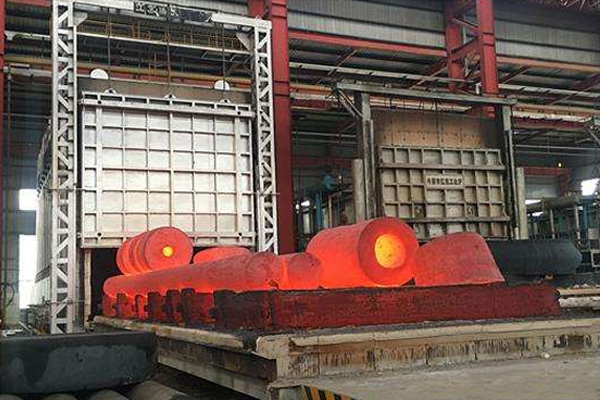Applications of hardenability and hardenability of forgings
Hardenability and hardenability are the performance indexes that characterize the quenching ability of forgings, and they are also the important basis for selecting and using materials.Hardenability is the maximum hardness that a forging can achieve under ideal conditions.The main factor determining the hardening degree of forging is the carbon content of forging, or more precisely the carbon content of solid solution in austenite during quenching and heating. The higher the carbon content is, the higher the hardening degree of steel will be.Although the alloying elements in steel have little influence on the hardenability of steel, they have great influence on the hardenability of steel.
Hardenability is the characteristic that determines the depth and hardness distribution of the hardened steel under specified conditions.That is, the ability to get the depth of the hardened layer when the steel is hardened, which is an inherent property of steel.Hardenability actually reflects the ease with which austenite can be converted to martensite when the steel is quenched.It is mainly related to the stability of supercooled austenite in steel, or to the critical quenching cooling rate in forged steel.
After quenching, the metallographic structure and hardness distribution curves are observed on the cross section of the cooling medium. The section line is martensite and the remainder is divided into non-Martensite areas, i.e., the structure before quenching.It can be seen from the figure that the martensite region of the steel bar on the right is deeper, so its hardenability is better, the martensite hardness of the material on the left is higher, that is, the hardening is better.The cooling rate of the forging section varies from place to place during quenching.The cooling speed of the surface is the maximum, and the cooling speed decreases as the center reaches the center. If the cooling speed of the surface and the center of the forging is greater than the critical cooling speed of the steel forging, martensite structure can be obtained along the entire section of the forging, that is, the steel forging is completely quenched.If the central part is below the critical cooling rate, martensite is obtained on the surface and non-Martensitic tissue is obtained in the heart, indicating that the steel forging has not been quenched through.
In production, the effective hardenability of steel forgings is usually expressed by the depth of the effective hardening layer, that is, the vertical distance from the surface measured to 50% (volume fraction) of the martensite.It is also useful to measure the vertical distance from the surface to a specified hardness to indicate the depth of the effective hardening layer.For example, induction hardening depth (DS) and chemical heat treatment depth (DC) are measured by the vertical distance from the surface to the specified hardness.
The distribution of mechanical parts energy after quenching and tempering of forgings with different hardenability is shown in the figure.High hardenability of its mechanical properties along the cross section is uniform distribution, and the quench penetration of low, low mechanical properties of the heart, toughness is lower.This is because after tempered steel forgings with high hardenability, their structure from surface to inside is granular tempered Soxhlet, which has high bremsstrahlability, while steel with low hardenability has flaccid ferrite at its heart, which has low bremsstrahlability.
(from duan168.com)
